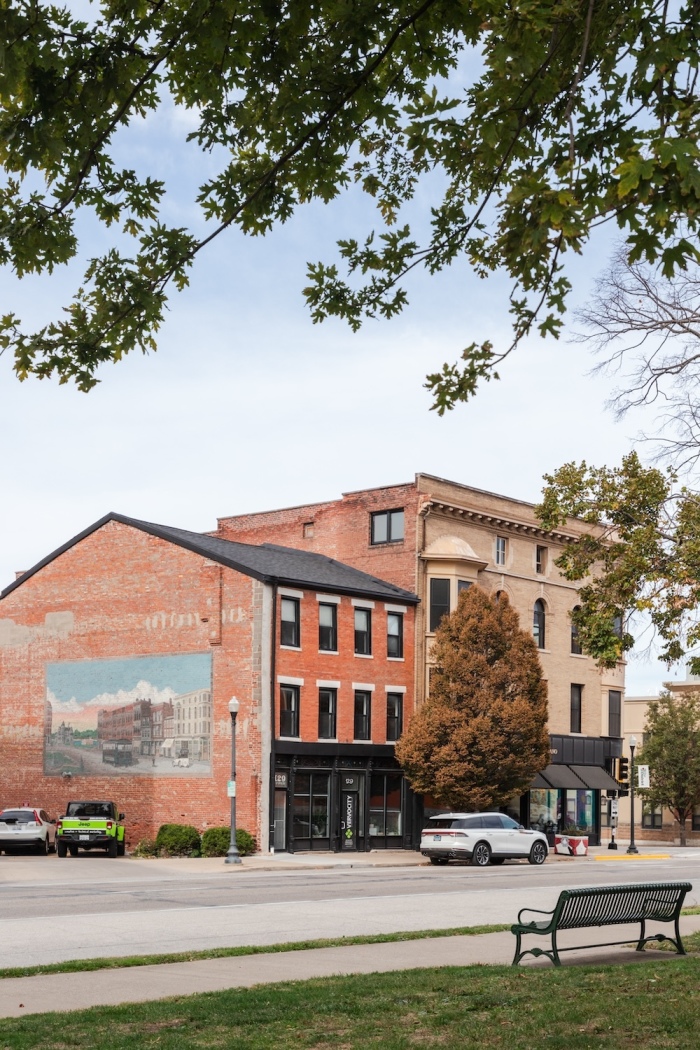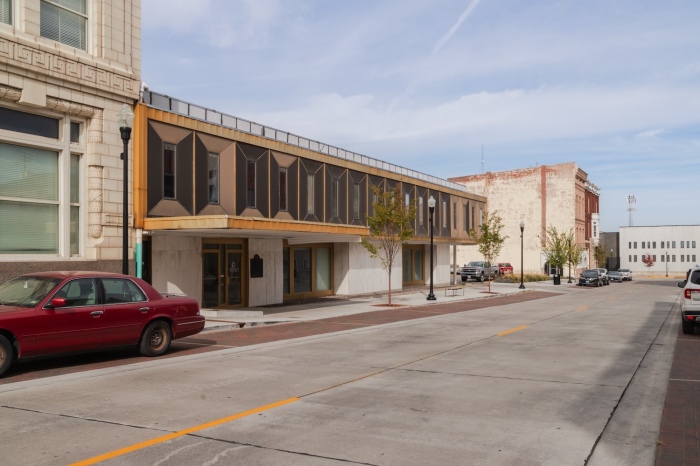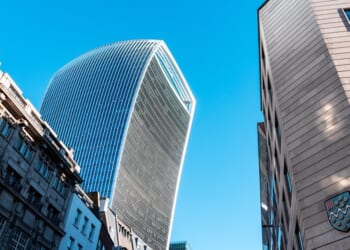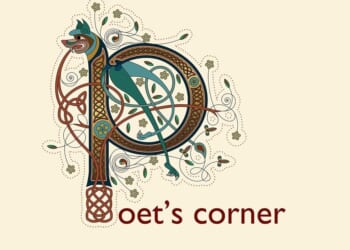
Few places along the Mississippi River tell America’s story of belief as vividly as Quincy, the river city perched on the bluffs in the westernmost point of Illinois.
Founded in 1825 and named for President John Quincy Adams, Quincy, the county seat of Adams County, was carved from the prairies of Illinois by Yankees who migrated westward from New England and upstate New York. The early settlers carried with them Whig politics, abolitionist convictions and the Protestant work ethic. Their imprint is still visible. Even the name of the local newspaper, the Herald-Whig, recalls the old-stock Yankees.
This city of 39,463 souls has repeatedly found itself at the center of religious and moral conflicts. In 1838 and 1839, Mormons crossed the Mississippi from Missouri to escape persecution. Later, abolitionists made Quincy a key stop on the Underground Railroad.

Joseph Smith, the founder of the Mormon church or, as it prefers to be called, the Church of Jesus Christ of Latter-day Saints, and many of his followers sought refuge here after being subjected to what today would unquestionably be called genocide.
The people of Quincy showed compassion and charity amid one of the darkest chapters in America’s history. They opened their doors with churches, homes and civic halls providing sanctuary until the Mormons established a new settlement on largely undesirable swampland about 45 miles upriver in neighboring Hancock County.
Nauvoo, as Smith named the new settlement, was chartered as a city by 1840 and within a few short years, rivaled the population of Chicago. But prosperity and tolerance were fleeting. The rapidly growing and increasingly insular Mormon community alarmed non-Mormons.

By 1844, tensions erupted. Smith and his brother were murdered by a mob while incarcerated in the county jail in Carthage, seat of Hancock County. For Mormons, Smith’s death is seen as an act of martyrdom — the end of a religious leader who unquestionably reshaped the religious landscape of the United States. It also ended Mormon ambitions in Illinois. Within two years, more than 12,000 adherents of the non-Christian religion began the long overland trek — using what became the California, Mormon and Oregon trails — to present-day Salt Lake City, Utah.
Today, Nauvoo (population 950) consists of a quaint downtown with mostly late 19th-century buildings and a historic district on the banks of the Mississippi River that mixes restored and reconstructed Mormon-era buildings.
The most prominent building is Nauvoo Temple, a Greek revival building modeled on the temple that was ruined after the Mormon exodus. It sits next to the Roman Catholic parish church of Sts. Peter and Paul, which by contrast is modest if not unremarkable. In the Mormonism, temples are reserved for certain practices or ordinances. While often comparable in scale to Christian cathedrals, temples are closed to non-Mormons once consecrated.
The historic district, reminiscent of Colonial Williamsburg, is predominately owned by the Utah-based Church of Jesus Christ of Latter-day Saints. However, the graves of Smith, his wife and brother belong to the Community of Christ, a smaller branch of Mormonism that in recent years has refashioned itself as trinitarian.

About 25 miles east in Carthage stands the old Hancock County Jail. Also LDS-owned, it has been restored to how it appeared in 1844 when Smith and his brother were killed.
Many visitors to Nauvoo and Carthage are Mormons on a religious pilgrimage, though the story found here is instructive even for non-Mormons. The guides, dressed in vaguely period attire, may be devout Mormons, but they aren’t proselytizing.
Back in Quincy, the conscience of the city was again put to the test in the years leading up to the Civil War. That’s when residents defied federal law to help enslaved people travel north in search of freedom.
It was also here in 1858 that Abraham Lincoln and Stephen A. Douglas met in Washington Park, a landmark square that still anchors downtown, for their sixth of seven debates. Thousands gathered to hear Lincoln attack slavery and argue against its expansion.
The city, nicknamed the Gem City, grew rapidly during the decades of the 1800s. This growth is reflected in the architecture one sees today.
Antebellum Greek revival homes, row houses with prominent bay windows and turn-of-the-last-century Queen Anne brownstone-faced mansions stand mere blocks from warehouses and other commercial buildings. Then there are the churches: Episcopal-turned-Anglican, Congregational, Evangelical and Reformed, Disciples of Christ, Methodist, Lutheran, Presbyterian and Roman Catholic. Many seem to have practiced a kind of architectural one-upmanship with each newly built church being a little bigger or having grander details — some with too much panache — than the last.
The notable architecture isn’t entirely 1800s. There are notable midcentury modern buildings, including St. Boniface Church. It replaced an earlier building used by the Ven. Augustus Tolton, the first black Roman Catholic priest in the United States.
Once located along the edge of the frontier with the Mississippi serving as the gateway to westward expansion, Quincy has flourished and faded over two centuries of existence. In days gone by, a literal who’s-who passed through Quincy on the steamboats that piloted the river.

Geographically Midwestern and historically Yankee, its real identity can be hard to locate. To my Michigan ears, the English spoken here sounded a bit Southern and a bit Appalachian. Meanwhile, the surrounding Adams County and neighboring Hancock and Pike counties feel about as rural as one can find.
And yet, despite a modest population and its significant Rust Belt decline, Quincy continues to punch above its weight. Its visitors have included six U.S. presidents: Rutherford B. Hayes in 1879, William McKinley in 1899, Theodore Roosevelt in 1903, Jimmy Carter in 1979, Bill Clinton in 2000 and Barack Obama in 2010.
If you go
The History Museum on the Square is housed in Quincy’s castle-like Richardsonian Romanesque former public library. While small, the collection is fascinating, particularly the stained-glass from local churches and the exhibits on Tolton, the black Roman Catholic priest. Open 10 a.m. to 4 p.m. Tuesday through Saturday; admission is free. Other must-visit Quincy sites include the Underground Railroad Museum, the mansion belonging to John Wood (founder of Quincy and later governor of Illinois), Lincoln-era Log Cabin Village and Quincy Museum.
The Mormon church operates two visitor centers in historic Nauvoo. Both are open daily: the north center from 10 a.m. to 4 p.m. Monday through Saturday and 12 p.m. to 4 pm. on Sunday, and the south center from 9 a.m. to 5 p.m. each day except Sunday, when hours are 12 to 5 p.m. Admission to historic Nauvoo is free. Parking is also free.
Quincy is reachable by plane though service is limited. Plus, you’ll need a car for explore the region. By road, Quincy lies about 130 miles north of St. Louis and nearly 300 miles southwest of Chicago.
The Atrium Hotel on Third, a one-time Holiday Inn, is undergoing extensive renovations before raising the flag of Hilton’s Doubletree brand. Once renovations are completed, it will be the place to stay in downtown Quincy. At least until a former downtown bank opens as a boutique hotel in 2027.
I stayed farther out at the current franchised Holiday Inn, surrounded by strip malls and big-box stores. Renovated within the last year or two, it’s a nicer-than-average Holiday Inn with a good all-day restaurant.
If you wanted to spend a night in Nauvoo, the Hotel Nauvoo Historic Inn & Restaurant has 1840s period rooms. Be aware the property closes Nov. 8 for the winter.
Recommended eateries in Quincy include the Patio Restaurant & Lounge, Tiramisu and BoodaLu Steakhouse, the latter of which is housed in a period building overlooking the Mississippi River.
Dennis Lennox writes a travel column for The Christian Post.
















